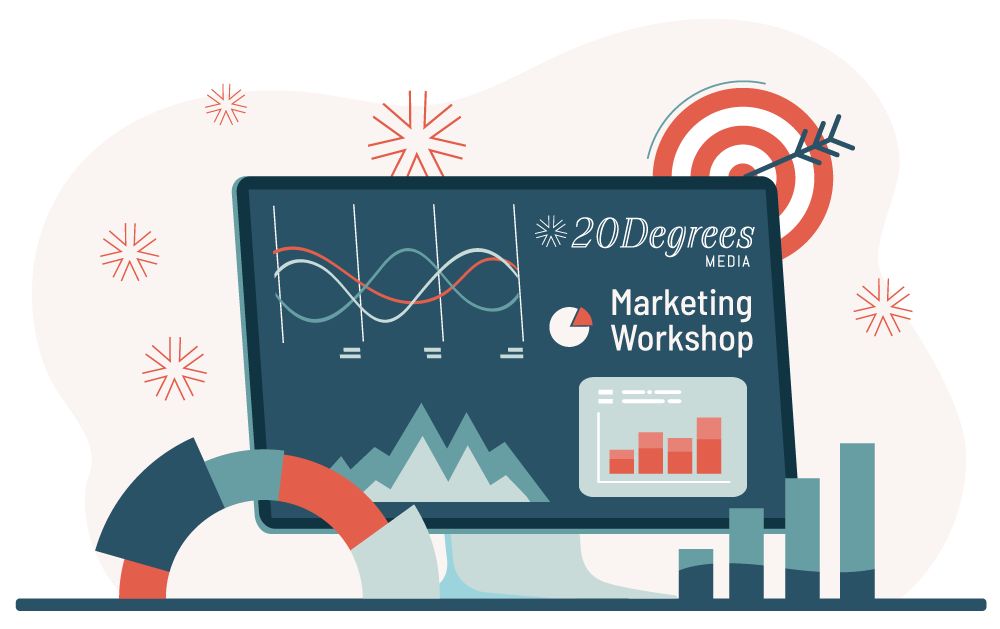When looking into and researching online marketing strategy, you’re likely going to hear the term “SEO” pop up every now and again. The acronym stands for “Search Engine Optimization,” which means helping to boost what you post online to the front of people’s searches. This can be done through various methods, but one we stand behind and usually coach our customers on is keywords; descriptors you use to help search engines know who they should be showing your business to. When you implement these keywords into every aspect of your posts, the photos, the titles, the copy, you’re making sure that your content is being put in front of the right people.
Some businesses already know their target audience, age group and who specifically they are talking to. They would know exactly what phrases, words their consumers are looking up and be able to find keywords specific to them. Those keywords would be incorporated into their copy across all marketing channels. If you don’t know then here is a way how too.

What Should You Be Talking About?
Before you can implement any SEO into your content, you need to pinpoint what your audience wants to see in the first place. One way you can achieve this is by looking through the data behind your posts to figure out what’s working and what isn’t. If you’re an outdoor retailer, is your content with pictures of nature getting more traction than your content with images of your gear or store? Is your audience more interested in hearing you talk about hiking than skiing? Clarifying these details is how you find out what you should be basing your content and SEO around.
Depending on the platform you use, you can easily collect this data and compare results between posts. Instagram allows for you to check certain metrics such as reach or impressions, but our personal favorite tool for this is the post scheduler Later. Not only can you easily release content across multiple platforms, you can get detailed analytics about your posts, compare them against one another, and find out what’s actually connecting with your audience.

Implementing SEO
When putting SEO in the titles of your blog posts or videos, you want to pick the most prominent keywords for your audience, and at the same time, not over-do it. If you’re promoting a new line of hiking shoes, you don’t want a title like “Hiking Extreme Weather Outdoor Fitness Health Shoes,” All that’s going to do is come off as spammy to your audience, and more than likely turn them away. Keeping it specific and only including only one or two keywords will help you on the SEO end, and make sure that you’re actually retaining your viewers.

When it comes to your photographs, there’s a lot of ways that you can include SEO, and even more ways that you can use AI to help you out. We’ve previously spoken about the service Freepik, and how it’s our #1 recommendation for AI image generation. Aside from having a well-stocked library of downloadable photographs and graphics, they provide a number of different methods for generating images, including the tried and true text-based version. You simply describe the picture you want, and Freepik creates one for you based on what you inputted. When trying this out, consider using your keywords to create the photograph, honing in what it is your audience responds to the most.
The next step you should be implementing is taking advantage of any photograph description or alt text features when posting a picture. Either of these features are essentially there to describe the image for anyone using screen-reader software, but they also checked for SEO. By implementing your keywords into this text, you’re helping search engines even more with directing viewers to see your posts. Like with titles, you don’t want to bombard these descriptions with every keyword imaginable, but there’s also a handy method you can use to take care of the bulk of the work.
You can ask an AI assistant, like Google’s Gemini, to write a description for a photograph that you tell it about. That way, the AI can can put together a concise and thorough description about the picture you need, and then you can plug in the keywords you want to use in the text provided. Plenty of platforms allow for you supply alt-text, such as WordPress or Instagram, so make sure to take advantage any time you have the opportunity!
When it comes to online marketing, SEO is an integral aspect to boosting your profile or website’s visibility, and ignoring it can be a major loss for your brand. Luckily, you don’t have to do it all yourself! AI is bringing a slew of new methods to automate the more tedious processes of marketing, and using it correctly could mean more time on your plate to take care of other matters.
How to use SEO:
- Analyze data to discover keywords that connect with your audience and other trends
- Implement the keywords into the titles of your posts, blogs, and photograph names
- Use an AI assistant to generate image descriptions for the alt-text of your photographs
- Insert keywords into the alt-text and you’re ready to post!






































